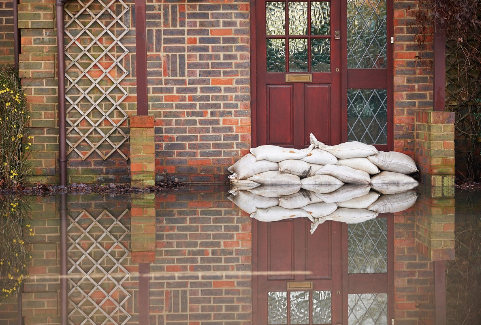
A flood can occur at any time, often with little or no warning.
During the winter and spring, heavy rains can increase the risk of seasonal flooding in Southern California.
As rainy season approaches, now is the time of year to take proactive steps that can reduce flood damage to your property.
Flood insurance is recommended for property owners who live in designated flood zones, but effective flood preparedness doesn’t stop there.
Reducing the potential impact of flooding in advance can save time, money and even lives in the long run.
When the waters begin to rise, stay out of harm’s way by keeping essential flood awareness and safety tips from the National Weather Service in mind.
Then – before the next storm strikes – use the flood preparedness tips for property and construction projects below to help minimize the potential damage to your home or business in the future.
Flood Preparedness Tips for Your Property
①Use Flood Damage-Resistant Materials
Certain construction materials can help reduce the amount of water damage your home or business suffers in the event of a flood.
These special materials can handle direct contact with floodwaters for up to 72 hours without sustaining the kind of significant damage that will require major repairs.
Here are the top flood-resistant materials to consider before building or remodeling certain areas of your property:
- Floors: Use concrete, pressure-treated lumber, or clay and ceramic tiles.
- Walls & Ceilings: Use brick, metal, concrete and stone.
- Doors: Use hollow metal doors and cabinets instead of solid wood.
- Surfaces: Use polyester epoxy paint for added protection.
②Raise Electrical System Components
Water and electricity don’t mix, which means floods can wreak havoc on your property’s electrical system.
You could face thousands of dollars in equipment repairs or even fall victim to a devastating fire sparked by live wires coming into direct contact with water.
Raising your electrical system components can go a long way toward protecting your property when water gets involved.
Follow these tips to get started:
- Ideally, all electrical components should be raised approximately one foot above the 100-year flood level. Learn more about how this number is calculated from the S. Geological Survey.
- Consult with a licensed professional to find out how high you can move electrical meters, switches and outlets. Your local power company can also help you determine how high you can raise your power meter.
- Upgrade your fuse box to a more modern circuit breaker system so it can handle high fluctuations in power.
③Utilize Sewer Backflow Valves
Sometimes floodwaters can cause sewage from your sewer lines to back up, pushing contaminated water back through drainage pipes and into your home or business.
This damage is not only costly, but also a serious health risk. Installing a backflow valve can prevent overloaded drain pipes from pushing return flow into your property.
Configurations range from simple flap-style valves to complex gate valves and those with both. Consider the following tips before choosing your new sewer backflow valve:
- Look for complex valve designs that use both flap and gate styles for extra protection.
- All valves should be installed on the main waste drain pipes leaving your building, or lines connected to equipment below the designated flood level.
- Only allow a licensed plumbing company to make alterations to your plumbing or sewer lines.
- Structures with sump pumps use underground lines, which may be more difficult to seal.
Wherever you live or work, a flood could affect you.
Having the right preparations in place can help reduce damage to your property during a flood and mitigate safety risks for your family or coworkers.
Once the waters have subsided, you can depend on the professionals at ServiceMaster Advanced Restoration OC to help reverse any damage your property did sustain.
Our expert teams are available 24/7/365 to provide the help you need to get your property back to normal as soon as possible after a flood.
